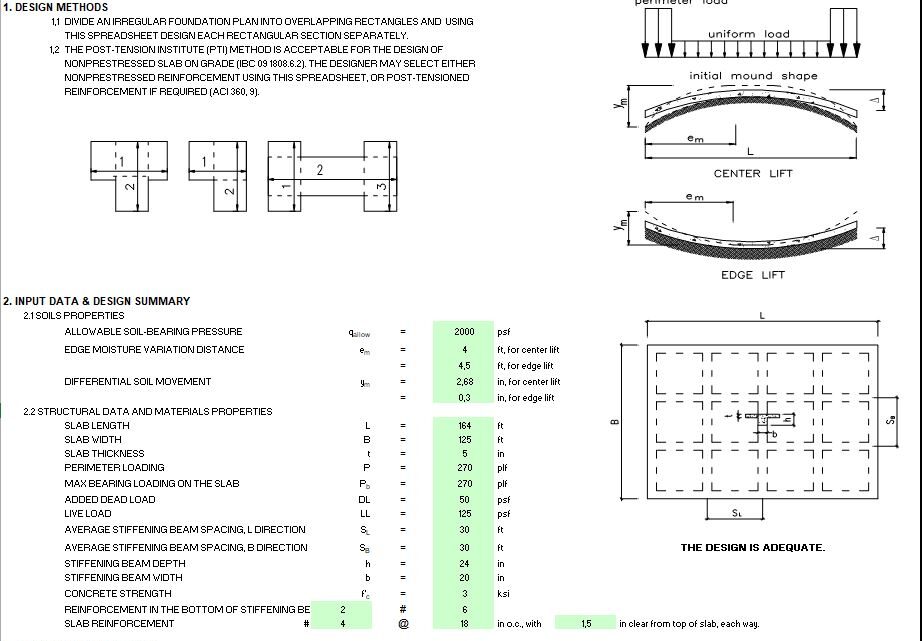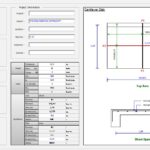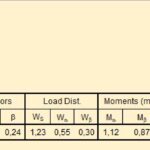
Design Of Conventional Slabs On Expansive Soil Grade Based On ACI 360 Spreadsheet
4 May 2025Table of Contents
Design Of Conventional Slabs On Expansive Soil Grade Based On ACI 360 Spreadsheet
Introduction
Expansive soils — those that swell when wet and shrink when dry — present some of the greatest challenges in slab-on-grade construction. Found across large parts of the United States, from Texas to Colorado and beyond, these soils can wreak havoc on foundations if not properly accounted for in design.
This article explores the design principles, challenges, and best practices for constructing conventional concrete slabs on expansive soil grade, helping engineers, contractors, and property developers minimize the risks of soil movement and structural damage.
What Are Expansive Soils?
Expansive soils are rich in clay minerals like montmorillonite, which absorb water and expand, then contract as they dry out. This swelling-shrinkage cycle can lead to:
-
Cracking of concrete slabs
-
Uplift or settlement of foundations
-
Damage to walls, doors, and plumbing
The key to success lies in anticipating and accommodating this movement during the design phase.
What is a Conventional Slab on Grade?
A conventional slab-on-grade is a flat concrete slab placed directly on the ground, typically reinforced with steel mesh or rebar. It’s widely used in residential and light commercial buildings because of its cost-effectiveness and ease of construction.
However, on expansive soils, a conventional slab can be risky if not carefully designed.
Design Considerations for Expansive Soils
When building on expansive clay, a one-size-fits-all slab approach won’t work. Engineers must customize the design to account for:
1. Soil Classification and Swell Potential
-
Conduct geotechnical investigations to identify clay content, plasticity index (PI), and moisture variation.
-
Highly plastic clays (PI > 20) demand special attention.
2. Moisture Control
-
Design the site to minimize water infiltration near the slab:
-
Sloped grading away from the structure
-
Use of gutters and downspouts
-
Soil treatment or replacement beneath the slab
-
3. Reinforcement Strategy
-
Use continuous reinforcement to resist cracking and differential movement.
-
Consider post-tensioned slabs in high-risk areas as an alternative to conventional slabs.
4. Slab Thickness and Joint Spacing
-
Increase slab thickness to resist bending and soil pressure.
-
Use control joints effectively to minimize random cracking.
5. Edge Moisture Control
-
Provide moisture barriers or capillary breaks around the perimeter to prevent edge curling and heaving.
Conventional vs. Alternative Solutions
While conventional slabs can be designed to work on expansive soils, engineers often compare them with alternatives such as:
| Type | Advantages | Drawbacks |
|---|---|---|
| Post-Tensioned Slabs | Resists soil movement better | Higher cost, specialized labor |
| Pier-and-Beam Foundations | Elevates slab above active zone | More complex, time-consuming |
| Waffle Slabs on Grade | Stiffens the slab, reduces cracking | Requires precise formwork & layout |
Pro tip: For moderate expansive soils, a reinforced conventional slab with moisture management often strikes the best balance of cost and performance.
Best Practices for Engineers
-
Collaborate with a geotechnical engineer early in the design.
-
Consider long-term moisture fluctuations — don’t just design for current soil conditions.
-
Educate contractors on the importance of moisture control during and after construction.
-
Monitor soil movement if building in high-risk zones or on sloped lots.
Conclusion
Designing conventional slabs on expansive soil is possible — but it’s not simple. It requires a deep understanding of soil behavior, proper reinforcement, and most importantly, moisture control. With smart design and construction practices, engineers can protect buildings from the damaging effects of soil movement and ensure long-term performance.
Whether you’re working on a residential development in Dallas or a warehouse in Denver, factoring in expansive soil behavior from the start is critical for structural safety and client satisfaction.








